Unique Places to Visit in Cairo that Will Help You Learn about Egypt’s History
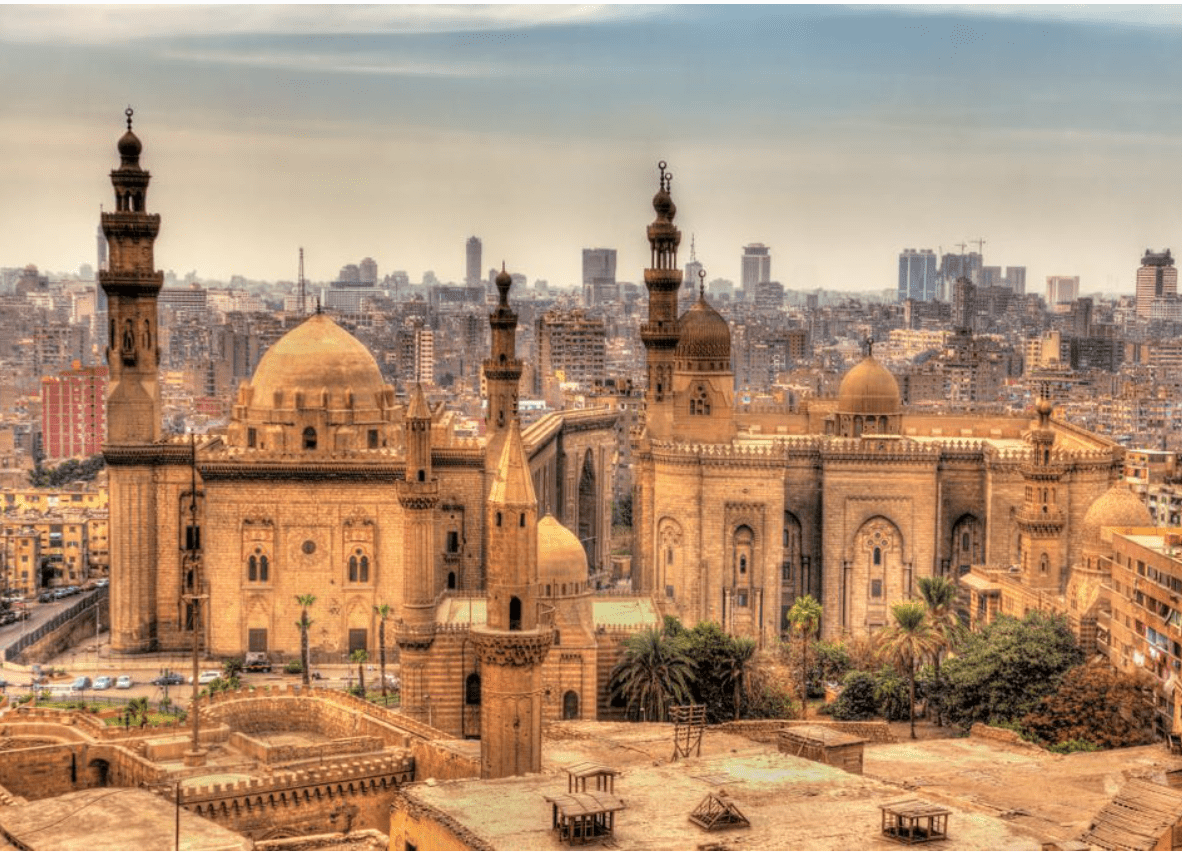
Updated On: April 18, 2024 by Dina Essawy
Egypt’s one of the oldest civilizations in the world and there are many locations around the country where you can immerse yourself in its long history and learn more about how the country was built and developed over the ages and through different civilizations.
Aside from the well-known landmarks, such as the Pyramids of Giza, the Egyptian Museum, Cairo Tower…etc., there are many other lesser-known locations that are equally worth exploring.
Wikala of Al-Ghuri
The Wikala of Sultan Qansuh al-Ghuri (Wikalat al-Ghuri) is a place of accommodation and marketplace dating back to medieval times in Cairo, Egypt. It was built between 1504 and 1505 by Sultan Qansuh al-Ghuri and is now considered one of the most impressive and well-preserved buildings of its kind in Cairo and a fantastic example of Islamic architecture
The building was a center of trade and housed merchants and traders along with their goods. The wikala or complex also included the sultan’s mausoleum and a religious complex with a khanqah (Sufi lodge), a sabil (water dispensary), kuttab (elementary school), and a mosque-madrasa. There is also a rabe’, a simple inn above the wikala.
The building consists of five stories centered around a courtyard with 28 rooms on each floor. Traders used to come from all over Africa to stay there for weeks at a time. They would stay on one of the upper floors while their animals and goods were stored in the rooms of the ground floor.
The building was restored in 2004 and still houses workshops for artisans, local offices, and hosts cultural events, including Sufi ceremonies.
The Wikala of Al-Ghuri is a fantastic place to visit if you’re looking for some entertainment while enjoying the historical ambience. The traditional performances by Al Tannoura Egyptian Heritage Dance Troupe usually take place on Mondays and Wednesdays at 7:00 pm.
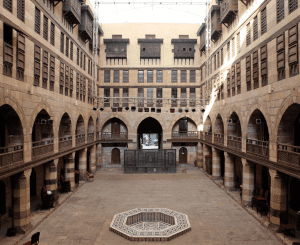
The Palace of Prince Taz
The Amir Taz Palace can be found at the intersection of Saliba Street and Suyufiyya Street in Cairo. It was built in 1352 in the Mamluk era by the Mamluk Prince Saif Eddin Taz who was the son-in-law of the Sultan and a prominent politician. The palace originally extended over 8,000 square meters, and its location is quite important as it is now considered to be at the entrance of Medieval Cairo. During the Ottoman empire, a noble named Ali Agha bought the palace as a residence and built a sabil (water dispensary) and a kottab (a small school to teach children the Quran, reading, and writing).
The palace of Emir Taz was remodeled during the reign of Khedive Ismail in the 17th century. In the 19th century, it was transformed into a girls’ school, and then a storage depot by the Ministry of Education.
The palace is considered valuable for its unique architecture and as it is the largest Mamluki palace still in existence and for that fact that it is still so well-preserved.
The palace has two entrances. The main entrance faces Suyufiyya Street and the other faces Sheikh Khalil alley. The main entrance was for the guests and leads to a lobby-like space separated from the rest of the residence by a wall to provide privacy for the dwellers of the palace. The wall also protected the house from external noise, wind, and dust. The second entrance was mainly for the women so that they can move freely in and out without any contact with the male guests who might be in the house. That’s why it is connected with the Haramlek (women’s residence) on the first floor.
The inner and outer courts provide natural ventilation and lighting and also allow the women to have a nice view and clean air while maintaining their privacy.
The palace also includes reception halls, a seating area, the Salamlek and Al-Meq’ad which consists of two floors. The ground floor has a seating hall with a marble fountain and the second is a large balcony overlooking the courtyard with an amazing ceiling.
The wood ceilings in the palace are beautiful works of art, with complex patterns, unique colors, and Arabic calligraphy.
After major renovations, the palace is now open to the public to explore the premises and the exhibitions held there.
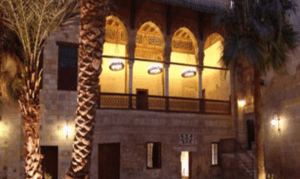
Beshtak Palace
The Beshtak Palace is a historic palace and museum built by the Mamluk amir Sayf al-Din Bashtak al-Nasiri, a powerful officer in the Mamluk era who was married to the daughter of Sultan al-Nasir Muhammad, in the 14th century in Cairo. It is located on Moez Street, in the area known as Bayn al-Qasrayn (between the two palaces), in reference to the great palaces that once stood there.
The palace was restored in 1983, but only part of it remains today, such as the large reception hall with its wooden ceiling, stucco windows with colored glass, and a marble fountain in the center. The third floor of the palace has several rooms, overlooking the main hall, where the women resided. The women residing in the palace would sit behind these mashrabiyyas to watch the assemblies and musical events taking place in the hall below.
Since the palace is located on Moez Street, the main thoroughfare in medieval Cairo, shops were added below the palace by the architect who designed it.
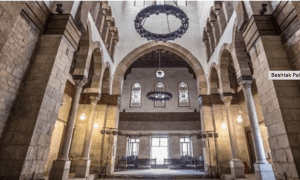
The Royal Chariots Museum
The Museum of the Royal Carriages or Chariots is located in the Boulak neighborhood in Cairo and it displays the royal carriages previously owned by the family of Muhammed Ali, the founder of modern Egypt and the rulers of Egypt for hundreds of years until 1952. They were Egypt’s last royal family. The royal family used these many exquisite carriages on many different occasions, including wedding ceremonies and official processions.
Considered one of the rarest museums of its kind and the fourth in the world after the museums of Russia, England, and Austria, the museum was established in the last quarter of the 20th century during the reign of Khedive Ismail to display the royal carriages and horses and it was originally called the “Department of the Khedive Carriages” and then its name changed to “Management of the Royal Stables” before finally settling on the Museum of Royal Carriages or Chariots.
The “Department of the Khedive Carriages” also used to take care of the valuable expensive cars and automobiles of the family from different world-class brands like Citroen, Ford, and Cadillac.
When it was first established, the museum used to consist of four sections; the first of which displayed horse-drawn carriages, the second was for the horses stable, the third was a veterinarian clinic, the fourth was an ambulance office, and the last section included accommodations for the workers. Over the years, the space of the museum was downsized and now it simply displays a selection of unique carriages and uniforms from the era.
The most recent restoration of the museum building took place in 2017 and cost an estimated EGP 63 million.
Now, the museum is divided into different halls. The first hall is the Antikkhana Hall showcasing the carriages and vehicles that were gifted to the royal family. The second hall (Gamallon Hall) is an open-air exhibition hall in which the rarest types of vehicles are displayed, such as the Alay chariot, and horse-drawn carriages manufactured with certain specifications for kings and senior statesmen. The third hall (Royal Events Hall) is the main hall of the museum which displays the carriages used by members of the royal family during various official occasions, as well as various beautiful oil paintings of members of the royal family. As for the fourth hall (Hosan Hall), it exhibits the clothes of stablemen, and a set of special accessories used to decorate the horses in the fifth hall.
There is also a Reception Hall with a display screen that plays documentaries on the history of Egypt and its last royal family.
All in all, the Museum of Royal Carriages exhibits around 78 historically valuable royal carriages, 22 of which are carriages that were gifts from kings and emperors of Europe presented to the rulers of Egypt since the reign of Khedive Ismail and until the ruling period of King Farouk, such as the carriage gifted by Napoleon III and Queen Eugene to Khedive Ismail on the occasion of the inauguration of the Suez Canal in 1869, as well as the Cuban carriage that was used by the Queen of Egypt and other notable family members during the opening conference of the Egyptian parliament.
Many of the carriages on display were also used to transfer foreign ambassadors and dignitaries during their stay in Egypt.
The museum has 7 galleries and 20 glass cupboards to preserve and display different types of uniforms that were used at the time, including leather outfits, ornaments that the horses used to wear, oil colored paintings, and also thousands of other items that the people working with the carriages used to wear.
The Museum of Royal Carriages is open every day from 9:00 am to 2:00 pm. Tickets are EGP 100 for adults and EGP 50 for students (foreigners) and EGP 20 for adults and EGP 10 for students (Egyptians).
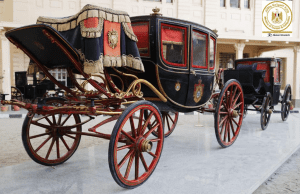
The Hanging Church
The Hanging Church is located in Old Cairo, specifically in the Religious Complex. Its name comes from the fact that it was built on top of the southern gate of the Roman Fortress, with logs of palm trees as a foundation. It has a unique wooden roof in the shape of Noah’s ark. The Hanging Church served as the residence of the Coptic Patriarch from the 7th century to the 13th century.
There are many legends and miracles related to this church, the most famous of which is the moving of the Moqattam Mountain. It is said that the Fatimid Caliph Al-Mu’izz asked Patriarch Abraham (975-978), the 62nd Patriarch, to move the Moqattam Mountain to prove the words of the gospel “If you have faith the size of a mustard seed, you shall say to this mountain: Remove from hence to yonder place, and it shall remove“ (Matthew 17-20). The Patriarch spent 3 days praying in front of the painting of the Virgin Mary until she appeared to him in a vision and told him what to do.
There are 110 icons in the Hanging Church, the oldest of which is called the “Coptic Mona Lisa”. It dates back to the 8th century A.D. and depicts Virgin Mary, Jesus Christ, and John the Baptist. It gained its nickname because as you move in front of the icon, the eyes of the Virgin Mary seem to be moving along with you.
We highly recommend visiting this beautiful and unique church.
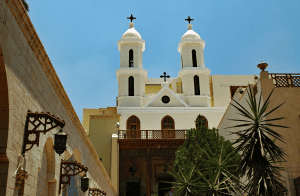
The Egyptian Textile Museum
The only museum of its kind in the region, the Egyptian Textile Museum showcases numerous types of textiles from different times, from ancient Egypt to the Roman, Coptic and Islamic eras. Located in Al-Jamalia district, specifically in Moes Street, Cairo, the Ottoman-style building used to be a sabil called the Sabil of Muhammad Ali before being converted into the museum it is today that tells the history of the textile industry in Egypt through the ages.
Muhammad Ali Pacha, the famous ruler and founder of modern Egypt, ruled Egypt in the nineteenth century, established this building as a sabil as a tribute to his son, Ismail, who tragically died in battle in Sudan.
The sabil also served as a school for orphans, and then as Primary School, which many famous Egyptian figures attended, including Noble laureate writer Naguib Mahfouz and president Gamal Abdel-Nasser.
The museum consists of two floors with eleven rooms displaying stunning treasures detailing what kind of clothes ancient Egyptians used to wear in their daily life, as well as the bedsheets that only women who ruled Egypt in the ancient times used, such as Queen Hatshepsut, and the linen for coffins decorated with images of the gods of the afterlife.
Other rooms also showcase the examples of textiles from the Greco-Roman era, and the Coptic era which was known as the golden era of textiles in Egypt.
Moving on to the Islamic era, you can find important artifacts, such as the kiswa of the Kaaba; a unique cloth that was used to cover the Kaaba in Mecca dating back to the reign of King Farouk (1936-1952). Each year, Egyptians used to manufacture a new kiswa and send it to Saudi Arabia before Hajj season, an honored tradition that started in the medieval period and continued until the middle of the 20th century.
Tickets to the museum are EGP 20 per adult and EGP 10 per student for foreigners, and Egyptians are charged EGP 10 for adults and EGP 5 for students. Photography tickets are sold separately for EGP 50.
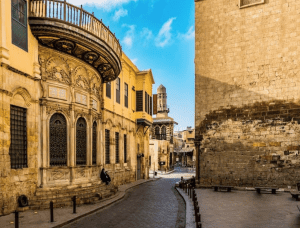
The Gates of Cairo
There were around 22 gates leading to the city of Cairo, and some of them are still standing today. When Cairo was founded in 969 by Gawhar al-Siqilli, the Fatimid Caliph, he also built a defensive wall around the borders of the city. In 1092, the Fatimids built a second wall around the city and several fortified gates were added to protect the inner and outer city areas.
Each gate had distinct decorative features, representing the ruler’s and city’s victories and various other aspects of the era.
Among the gates that still exist today are Bab al-Futuh (Gate of Conquest), Bab Al Jadid (the New Gate), Bāb al-Ghuri (the Gate of the Attacker), Bab al-Husayniyyah (Husayniyyah Gate), Bab al-Khalq (the Gate of Creation), Bab al-Nasr (the Gate of Victory), Bab al-Qantarah (the Gate of the Bridge), Bab al-Qila (the Gate of Alkali), Bab al-Shaariy‘ah (after the name of a tribe), Bab al-Silsilah (the Gate of the Chain), Bab al-Sirr (the Gate of the Secret), Bab al-Tawfiq (the Gate of Success), Bab al-Wazir (the Minister’s Gate), Bab Khan al-Khalili, Bab Sa‘adah (Gate of Happiness), Bab Darb al-Laban (Gate of the Milky Way) and Bab Zuweila.
The first of Cairo’s gates is Bab al Futuh at the northern end of Moez Street. It dates back to 1087 AD and was built by Minister Badr al Jamali during the reign of Caliph Mustamir. The gate is beautifully decorated with geometric motifs. It has two rounded towers for pouring burning oil or water on the attackers.
Bab Al-Nasr was the second of the gates of Cairo and it was constructed by Gawhar al-Siqilli during the reign of caliph Al-Moez in 970 AD. The gate is massive with rectangular towers on either side of the arch with noticeable decorative shields on the flanks and fronts of the tower to symbolize victory in protecting the city against any invading forces. The towers of the north wall of the gate also display the names of some French officers serving under Napoleon who were responsible for providing security for the city.
Bab Zuweila is the third gate and was built in 1092. It is one of the last remaining gates from the Fatimid era and its name refers to a tribe of Berber warriors from the western desert that was tasked with safeguarding the gate. The gate was used as a point for departure for pilgrims to Mecca. It is the most famous of the gates around Cairo because it was the place where executions were performed until the 19th century and the severed heads of the criminals would hang from the gate as warning for others not to commit such crimes.
Bab al-Nasr or the Victory Gate can be found near the Khan al-Khalili. It was also established by Gawhar al-Siqilli, and renovated by Badr El Gamali in 1085. On its front are two squares with sculptures of swords and shields.
There are many gates still standing, all of which symbolize Cairo’s long history and showcase the efforts carried out by its rulers to protect the city’s borders and its people from outside attacks.
They are fascinating to visit for sure.
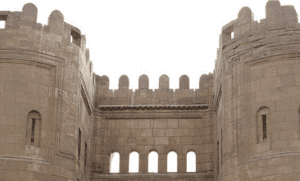
Monastery of Saint Simon
Known as the cave monastery, the Monastery of Saint Simon the Tanner (or Deir Samaan El Karraz) is built inside the Moqattam Mountain in Cairo. It includes six Orthodox churches, and it is the largest church in Egypt, accommodating 20 thousand people, and it has 76 engraved icons.
Simon the Tanner lived in the 10th century and worked as a craftsman. According to traditional stories, Caliph Al Moez used to invite religious leaders to debate in his presence. At one of those meetings, Pope Abraham got the upper hand in the debate against Yaqub ibn Killis, after which the latter challenged him by quoting a Bible verse: ” “Truly I tell you, if you have faith as small as a mustard seed, you can say to this mountain, ‘Move from here to there,’ and it will move. Nothing will be impossible for you.” (Matthew 17:20) and demanded that the Pope prove his faith is true. Upon hearing this, Al Moez demanded that Abraham perform it himself.
For three days, Abraham devoutly prayed to the Virgin Mary at the Hanging Church until he saw her in a vision and she told him to go to the great market and “There thou wilt find a one-eyed man carrying on his shoulder a jar full of water; seize him, for he is at whose hands this miracle shall be manifested.” The man was Simon the tanner. Simon directed Abraham to go out to the mountain with the Caliph and all his soldiers and the priests, and cry out “O Lord, have mercy” three times while making the sign of the cross over the mountain every time. The Pope followed Simon’s words and the mountain was lifted.
In commemoration of this miracle, the monastery was built in Saint Simon’s memory and honor. Today, it is visited by thousands of people from across the world.
The monastery is open to visitors from 9:00 am to 4:00 pm and may require previous reservations before going, so be sure to call ahead first, just in case.
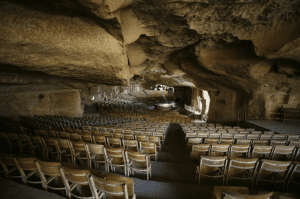
Cairo is full of ancient monuments that are well worth a visit and will help you learn more about Egypt’s long and rich history. This list includes only a few examples of unique places that may not be known by many, but are still very significant, and exploring them would definitely add incredible value to your visit to Cairo, Egypt.






